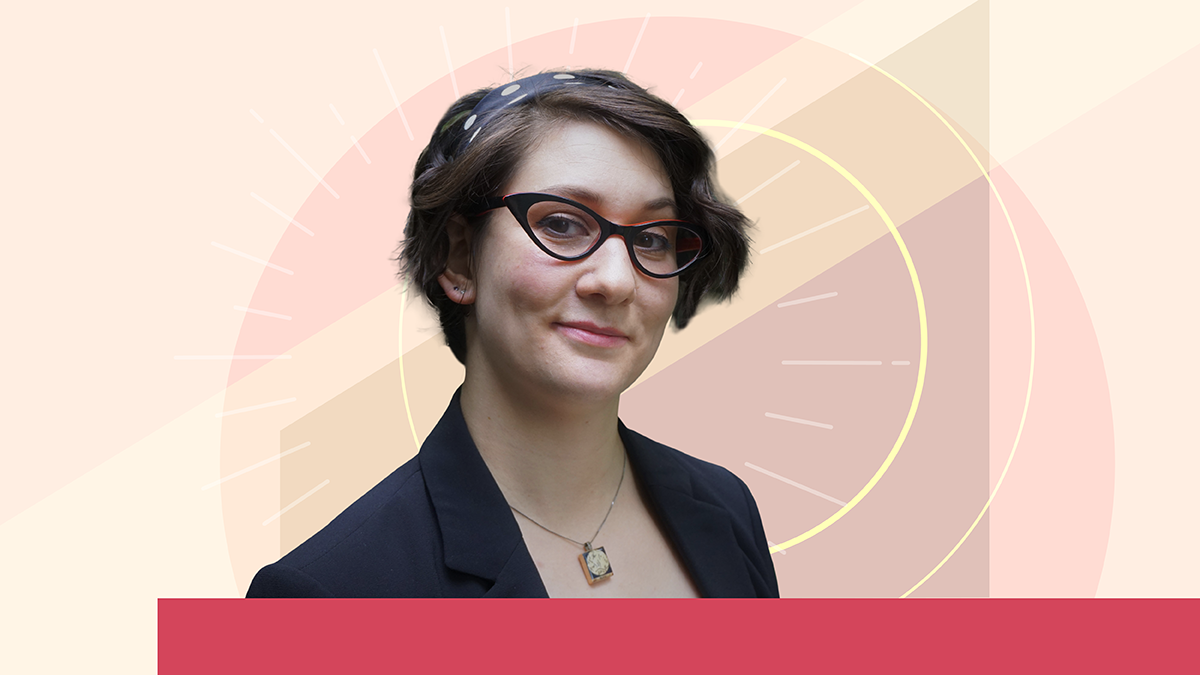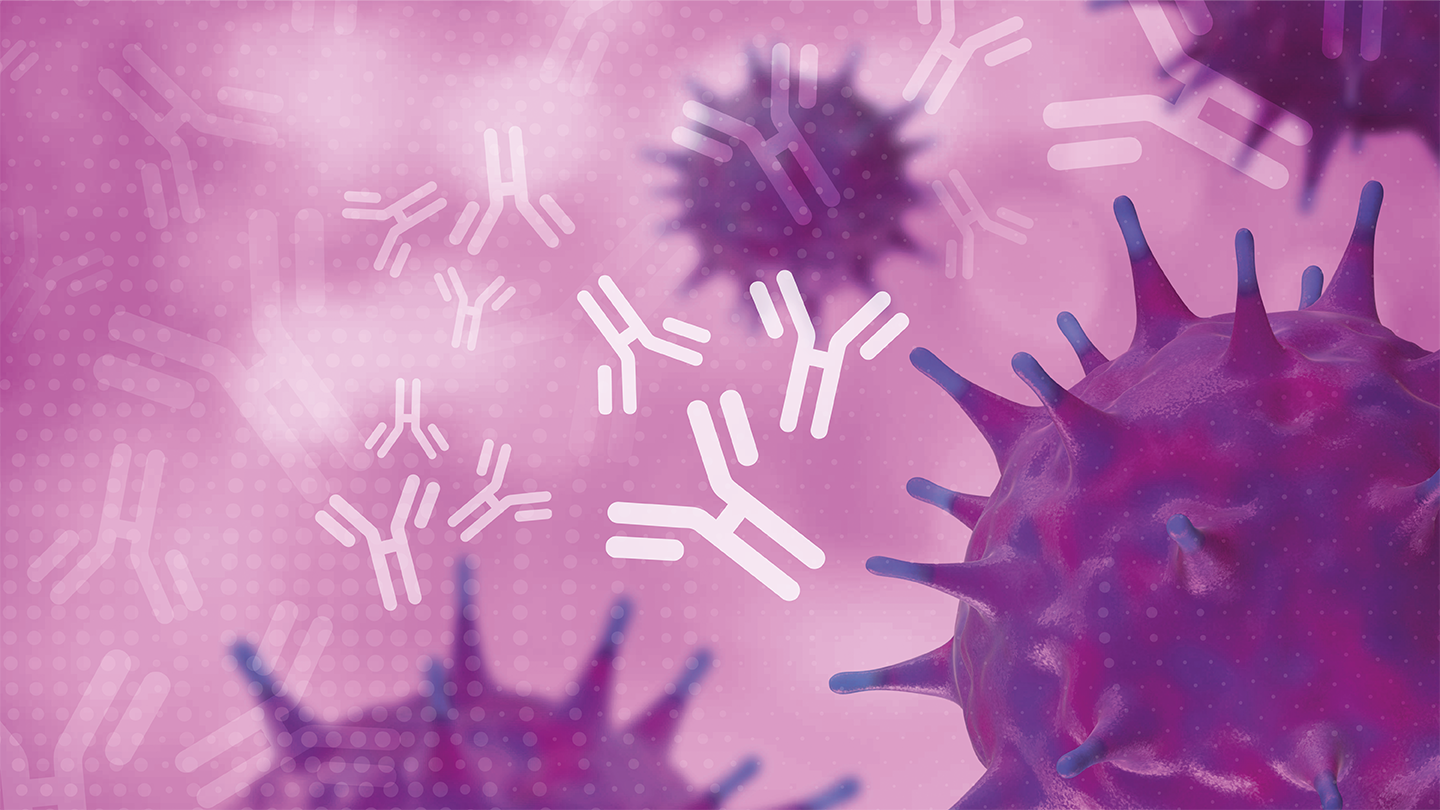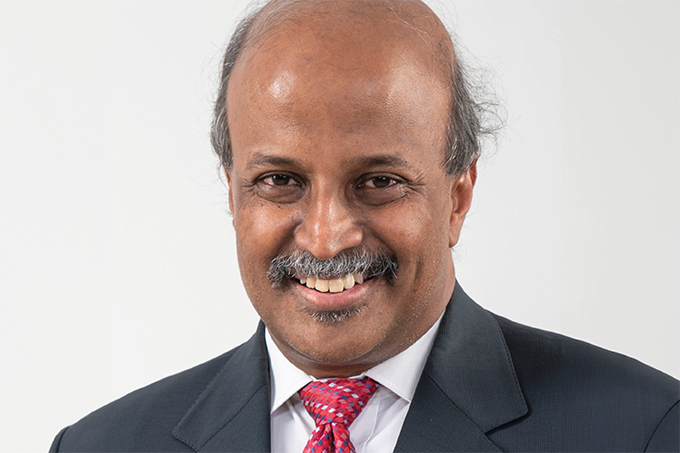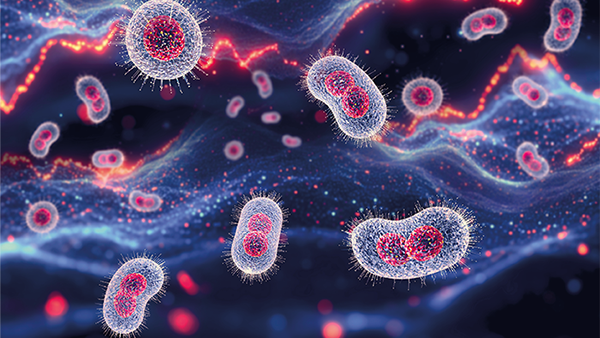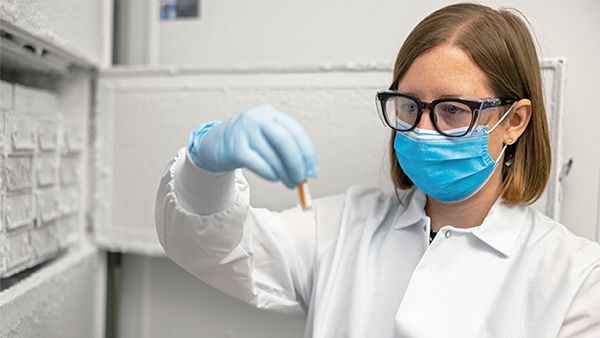Career Stories with Lindsey B.C. Estetter
Life as a public health microbiologist
What inspired you to pursue a career as a microbiologist?
My interest in microbiology started in high school when I was briefly enrolled in a cosmetology program offered in my school district. I quickly realized I enjoyed learning more about the health regulations and types of infections that can be encountered in a salon rather than the hair and makeup portion of the class. This informed my early college enrollment – and set me on my path to becoming a microbiologist. There was also a bit of germaphobia mixed in at the time, which was luckily quelled by learning about the scary unknown!
What challenges did you face on your path to becoming a microbiologist?
I have been very fortunate to have a relatively easy path to becoming a microbiologist. I knew my interests early and was not disappointed when I finally reached the point of working in a microbiology lab. I had the opportunity to complete a thesis-based Master’s degree where I experienced the struggles of research with frustrating long nights in the lab, but still felt the excitement of discovering something new.
During the last year of my Master’s program, I was convinced by a member of my thesis committee – the very persuasive Rodney Rohde – to continue my education by enrolling in the Medical Laboratory Science (MLS) program at Texas State University. Even after earning a Bachelor’s in microbiology and working on completing my Master’s degree, I had never heard of the MLS program. Nor did I know that a degree existed specifically to teach applied sciences geared toward the medical laboratory. Although I wasn’t super excited to spend an additional two years in school to obtain a second Bachelor’s degree, the MLS program gave me the applied clinical experience I was hoping to learn in my microbiology courses and pushed me toward a career in public health.
During the last semester of the MLS program, Rohde shared an opportunity for a fellowship with Association of Public Health Laboratories (APHL) and Centers for Disease Control and Prevention (CDC). I applied and, before graduation, I was offered a one-year fellowship at the CDC in Atlanta. Nine years later, I’m still at the CDC doing the public health work I had hoped to do. I credit the clinical experience I gained from those two additional years in the MLS program, combined with my prior research experience, for my acceptance into the fellowship and my continued career in public health.
What surprised you most when you entered the workforce after completing training?
I was most surprised by the interconnectedness of the medical laboratory. I realized very quickly just how small the world can be and how important it is to maintain good working relationships – even now, I am still surprised by the personal connections I have seen between public health, pathology, and the medical laboratory.
Where might a qualified microbiologist find themselves working?
There are many opportunities available to a microbiologist with an MLS certification. Students mostly hear about working in a hospital or clinic lab, which is a great place to quickly learn all the various lab departments; however, the downside is that hospitals run 24/7, which often leads to new graduates working less desirable hours and in high stress situations. Clinics tend to have standard hours that can be more desirable to those with families. Other opportunities include positions in reference labs, public health, regulation, and the private sector.
Public health is a path many are unfamiliar with as an option. Post-COVID-19, there has been a greater push for labs to hire MLS-certified laboratorians who can bring their experience of quality assurance and compliance with regulations. Many departments within public health labs run normal business hours and allow for a greater work-life balance. For those with several years of clinical lab experience ready to move off the bench, regulatory and quality positions may be a good fit; these types of positions are vital to ensuring our clinical labs are operating to the highest quality possible. Finally, graduates can consider positions in the private sector, including roles in companies producing the assays and reagents used within clinical labs or startups developing new instruments to improve patient care. I recommend having a level of skepticism if you plan to jump into a startup position; however, the presence of a well-trained MLS can help ensure patient care and overall quality is maintained.
How has work in the lab changed since COVID-19?
The most positive change I have seen is an understanding of the importance in hiring certified medical laboratory scientists in the clinical lab. There is currently no federal regulation in place requiring board certification to work in a laboratory on patient samples. Although individuals with an undergraduate biology degree have laboratory knowledge and are trained in specific practices of the clinical lab, there is a different level of understanding in matters of quality assurance and the compliance requirements of the clinical lab. With more labs (particularly in public health) opening positions specifically for certified laboratory scientists, we can expect to see increased quality assurance and overall better patient care.
What’s the best thing about your job?
My favorite part is the time I spend on the bench knowing the assays I helped develop and the test results I put out are providing lifesaving feedback to the patient, answering questions for a grieving family, and helping to protect the health of our communities. I have always wanted to make a difference in the lives of others, but being an introvert with social anxiety has pushed me away from interacting directly with patients. Having the ability to do the science I love and knowing that what I do is making a difference is what makes my job so amazing.
What’s the most unique experience you’ve encountered so far in your career?
I have been fortunate to be in a place during multiple outbreaks – and one major pandemic – where what I do has made a difference. I was actively involved during the 2015–16 Zika outbreak and COVID-19 pandemic where I worked with a team to publish valuable information that helped guide the detection of future cases.
How can the medical laboratory increase interest and recruitment in the field?
The biggest area we, as medical laboratory professionals, can improve upon is raising awareness of the profession to increase interest and recruitment into the field. A recurring theme with MLS graduates is that we didn’t know the degree or profession existed – many of us enter a biology or microbiology degree program expecting to learn the clinical relevance of microbes and the diseases they cause, only to realize the program is geared more toward the chemical and molecular inner workings of microbes. While interesting, it is a very different path than the applied sciences. If we can better highlight our programs and profession earlier on, we will be able to recruit more students and bring them in before they have already earned their first degree. Hopefully with increased interest in the programs, we can find additional funding to support and expand our programs – and ultimately have better prepared scientists entering our healthcare workforce.
What advice would you give to students considering a career in microbiology?
My greatest piece of advice: know what type of science you see yourself doing. If you see yourself performing fundamental research to answer those “why” and “how” questions, prepare for academic graduate and post-graduate work. If your passion lies in helping patients from behind the scenes or helping the community at large, you may want to look further into MLS programs that can provide the applied science training that will set you up for a career in a clinical setting.
